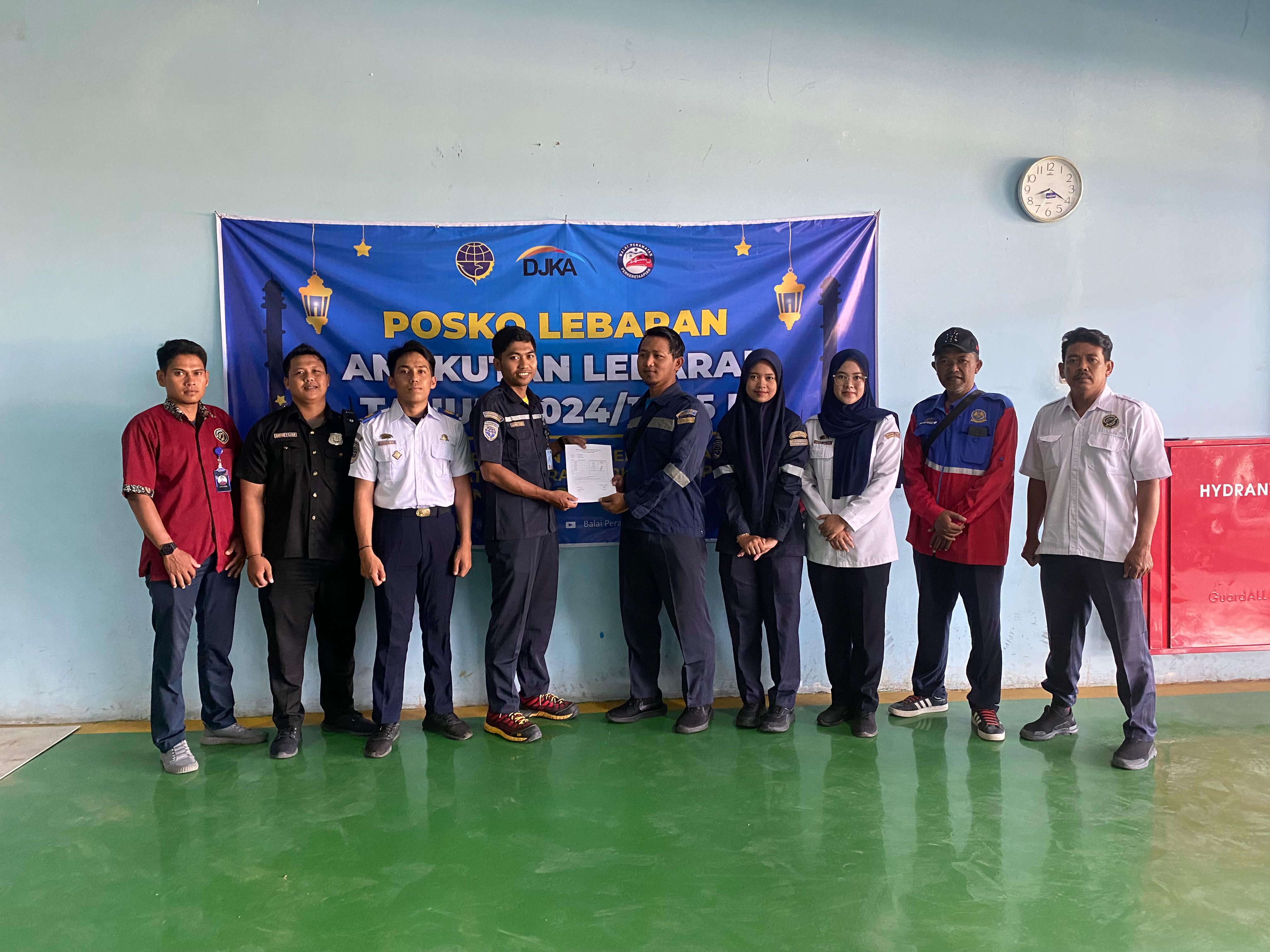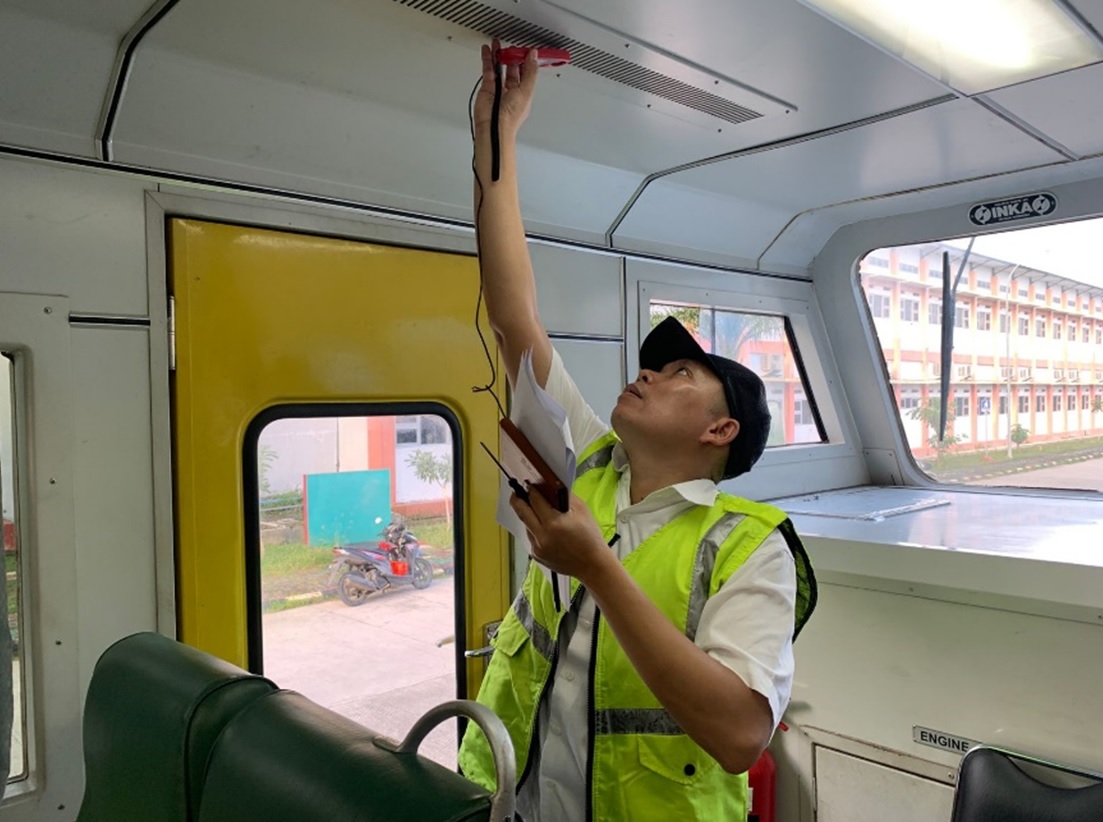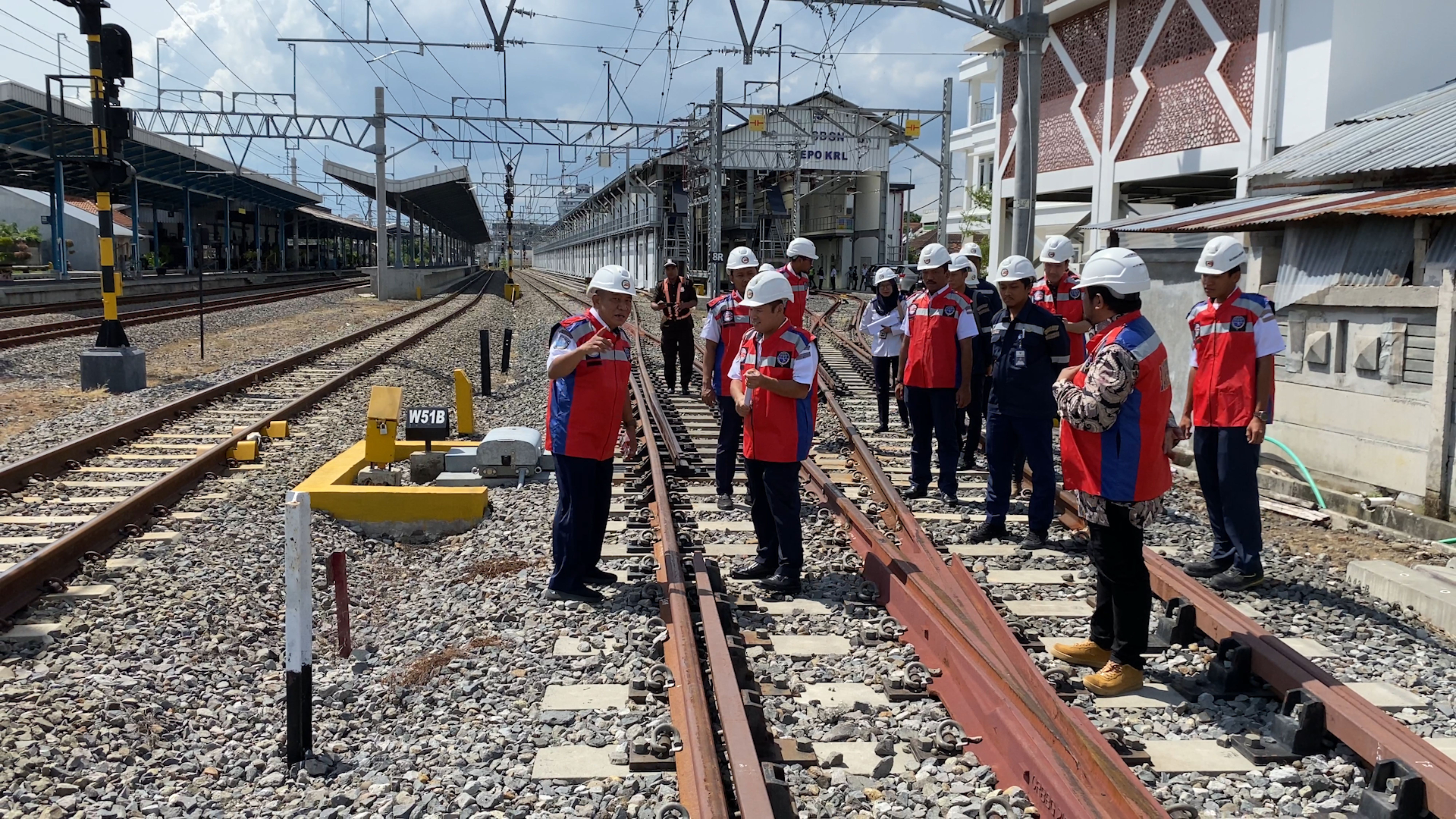IMPLEMENTATION OF INSPECTION TRAIN TESTING
.png)
Bekasi - Inspection Train is defined as a train that supervises the technical and operational feasibility of railway infrastructure and facilities in Java and Sumatra. Inspection Trains generally have detector equipment to qualitatively test infrastructure and work space like a mobile office.
The Inspection Train is a modification of the Diesel Rail Train (KRD). This train is usually used by officials at the Ministerial level for inspections, therefore this train is called an official train. In the Regulation of the Minister of Transportation No. 16 of 2011 concerning Standards, Procedures for Testing and Certification of the Feasibility of Special Equipment, it is explained that Railway Facilities Testing is carried out to determine the suitability between technical requirements and the condition and function of railway facilities.
To ensure this suitability, the Railway Facilities Testing Team from the Railway Testing Center conducted Dynamic Testing, which had previously undergone several Static Tests. The Dynamic Testing of the Inspection Train was carried out on the track between Tanah Abang Station and Kampung Bandan Station.
According to Article 28 of the Minister of Transportation Regulation No. 16 of 2011, Dimensional Testing is a method used to assess the condition and functionality of special equipment, such as the Inspection Train, while in motion.
Based on the above regulation there are also items that must be tested, including the following:
Noise Testing.
Conducted to determine the level of noise to the environment. Performed by measuring noise in the condition of all equipment operating and placed in an open space.
Air Circulation Testing.
Performed to determine the speed of air flow in the machinist's cabin by measuring the fan and air suction.
Vibration Testing.
Performed to determine the vibration that occurs, by measuring the vibration that occurs at the maximum operational speed.
Braking Testing.
Performed to determine the performance of the braking system consisting of service brakes, emergency brakes and deadman.
Service brakes are carried out by carrying out service brake experiments at certain speeds in stages and measuring braking distance and travel time.
The emergency brake is performed by testing the emergency brake function at a certain speed.
While deadman is done by experimenting with the deadman function in giving a warning before automatic braking works.
Acceleration Testing
Performed to determine the amount of acceleration of special equipment by measuring the travel time from a stop condition to a certain speed on a flat straight rail road.
Loading Testing.
Performed to determine the performance of propulsion. And done by operating special equipment in accordance with the slope of the railroad at a load based on specifications and measuring the maximum speed reached.
Electrical Testing
Performed to determine the amount of input voltage and electrical output by looking at the voltmeter indicator in the driver's cabin.
In every Dynamic Testing of Railway Facilities, it is required to use testing tools that are useful to support the above test items. The following are some of the tools that must be brought to do the test:
Vibograph, which is a tool used for vibration testing.
Sound Level Meter, which is a tool used for Noise testing.
Anemometer, which is a tool used for air circulation testing.
Stopwatch, which is a tool used for speed testing and braking testing.
Lux Meter, which is a tool used to measure the amount of light intensity.
The results of all tests that have been carried out will be made a report and submitted to the Directorate of Railway Facilities for further processing for certificate issuance.
HUMAS BALAI PENGUJIAN PERKERETAAPIAN











Komentar
LOGIN FOR COMMENT Sign in with Google